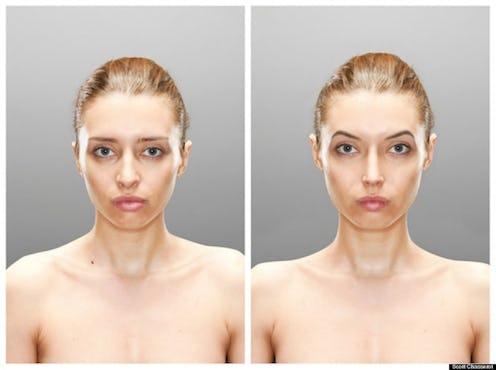Style
These Photos Show How You Really Wish You Looked

In his revolutionary photo project entitled "Original/Ideal", photographer Scott Chasserot uses a brain scanner to reveal how people wish they looked in real life. In so doing, the project aims to answer one of the most pressing societal questions: What do we find instinctively beautiful in the human face, and how does this translate to self-image? Although the technology was complex, the process was simple: Chasserot first asked 13 participants to pose for a single headshot against a plain background sans jewelry, makeup, or clothing. He then manipulated their facial features using an editing software to reflect, as his project video terms it, "scientifically established canons of beauty." The result was the subject's ideal self-image.
Immediately following, Chasserot fitted participants with an EEG headset designed to record and interpret their brainwaves while viewing the manipulated images. Next, Chasserot presented project participants with a slideshow of both their original photo and its corresponding "ideal." He then looked for positive emotional responses among the resulting brain scans to determine which photo the subjects preferred.
The results are striking. Chasserot's project website describes the manipulated photo as "a cerebrally sincere preference obtained by circumventing conscious thought." This means that subconsciously, most of us may be unhappy with our appearance, or wish it were more in line with normative beauty standards. What's particularly powerful for me is Chasserot's photograph of a young child, whose ideal image features a more structured jawline, and blue eyes instead of brown. The disparity between this image and the original is living proof of how deeply ingrained our concept of beauty is at a young age. Still, "Original/Ideal" features a variety of subjects, demonstrating the range with which ideal beauty standards stretch across age, race, and gender.
Be sure to also check out the video of Chasserot's project below:
Images and Video: Courtesy of Scott Chasserot